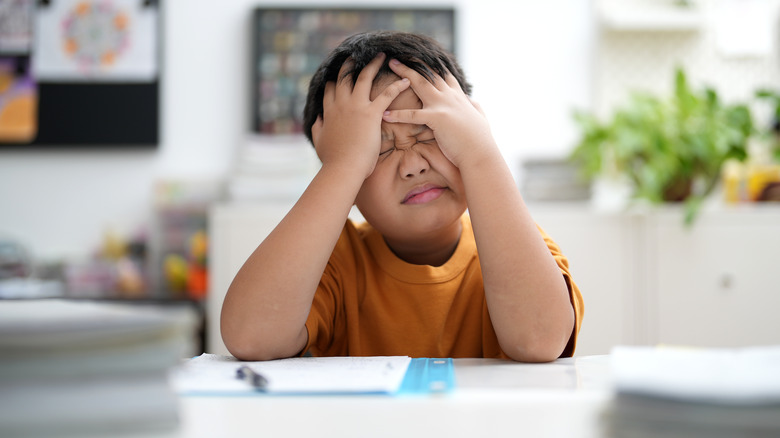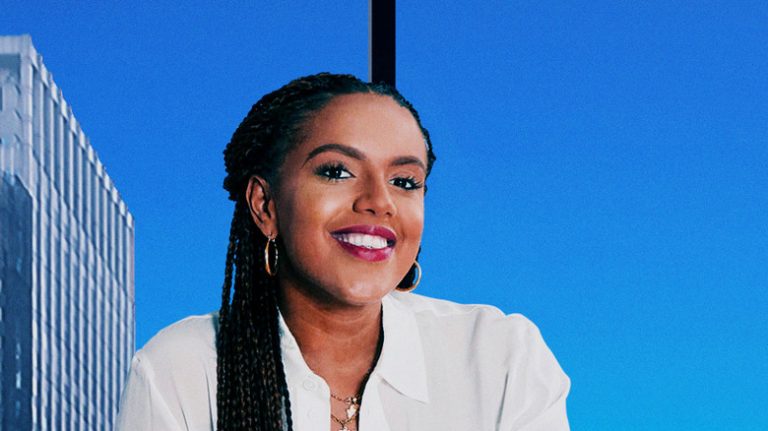Having children can be fun, especially when it comes to spilling the tea. Typically, you only have to worry about your toddler telling the Target cashier about your birthmark. But, when celebrity children spill the tea, it’s for the whole world to see.
Recently, North West, the child of Kim Kardashian and Kanye West, told followers she has dyslexia during a TikTok video. She went on to ask fans, “Do you know what that means?” However, Kim Kardashian quickly cut her off before she could explain more, interjecting, “You are saying way too much” and “I purposely don’t talk about stuff that you’re going through.”
But what does dyslexia mean for North? Dyslexia can encompass problems with letter matching and spelling, making reading fluently challenging. Additionally, The Yale Center for Dyslexia & Creativity notes dyslexia can never be cured. Therefore, those with the disorder must continue to use their coping mechanisms and aids throughout their lives.
To help you better understand what North West’s diagnosis means, we’ll explain more about what dyslexia is and the different mechanisms behind this reading disorder. We’ll also explore warning signs and treatments to help you understand what living with dyslexia is like.
What is dyslexia?

North West is not alone in having a dyslexia diagnosis. According to The Yale Center, dyslexia affects about 20% of the population and is the most common neuro-cognitive disorder. They state that 80%-90% of those with learning disabilities are diagnosed with dyslexia.
To answer the question of what it is, look no further than the International Dyslexia Association (IDA). They classify dyslexia as a language-based learning disability with a cluster of symptoms. This condition makes it difficult for those who have it to spell, write, read, and pronounce words. It can also make it difficult for individuals to succeed in a learning environment without support. Dyslexia can have various symptoms depending on the person, but IDA notes that word recognition and understanding textbook material can be difficult. For example, people may struggle to comprehend the words they read within a textbook but they can understand the material when it’s read aloud. It can also coincide with other conditions like ADHD and speech/language disorders.
The causes of dyslexia aren’t completely understood, according to the IDA. However, brain studies have shown changes in how the brain functions and develops for those with dyslexia. Cleveland Clinic also notes it’s genetic. Additionally, dyslexia doesn’t correlate with intelligence, and this learning disability can happen to those of all different backgrounds and intelligence levels, per IDA. Those with dyslexia might also be gifted in other areas like art, computer science, and electronics.
Warning signs of dyslexia

Before North West’s diagnosis, there may have been symptoms that Kim Kardashian, Kanye West, and her school would have noticed. Dyslexia symptoms aren’t standard for everyone, but they are present through preschool and elementary school.
Reading Rockets states that late talking can be a warning sign. You may also notice young children with dyslexia needing help pronouncing words or being slower to learn different vocabulary. It’s also difficult for them to recall particular words. For example, they might not remember the name of the refrigerator, so they try to describe it with words they remember. Difficulty spelling their name and following multi-step instructions are also common. Parents may also notice their child’s fine motor skills are developing more slowly.
The warning signs of dyslexia can go unnoticed until a child goes into elementary school. Once they begin learning to read, words are hard for them to decode; so they can struggle with sounding out words and may mumble through big words, which can make them embarrassed to read out loud, according to Understood. Additionally, they may read books more slowly and need help comprehending or explaining the story. It’s common for them to confuse letters like “b” and “d” or write numbers backward. Reading Rockets also adds that children with dyslexia can confuse small words, reverse words, and transpose letters; so, for example, “felt” is written as “left.”
Treatment options for dyslexia

Prostock-studio/Shutterstock
Unlike many disorders, where you can take medicine to treat your symptoms, dyslexia has no medication. Management through educational interventions at an early age can help people with dyslexia learn to cope with their symptoms and flourish in their education.
One of the best things you can do for your child is to read with them and be patient, according to Mayo Clinic. While dyslexia can affect their reading comprehension, individuals can easily comprehend spoken words.
This is why many schools may take a multisensory teaching approach based on the Orton-Gillingham approach, per Understood. In this learning environment, you use sight, sound, movement, and touch to help children connect the letters on the page with the word’s meaning. For example, learning syllables can mean tapping them out. Songs and mnemonic devices can be helpful when trying to learn sight words, so you might create a fun or silly sentence for the word “they,” which can help the child with word recall.
The Orton-Gillingham approach also breaks reading and spelling down into smaller parts. It’s used with small-group or one-on-one training to help students work at their own pace for reading and writing. There are also learning aids, like audiobooks, specialized fonts with more space between letters, and assistive technology tools.



